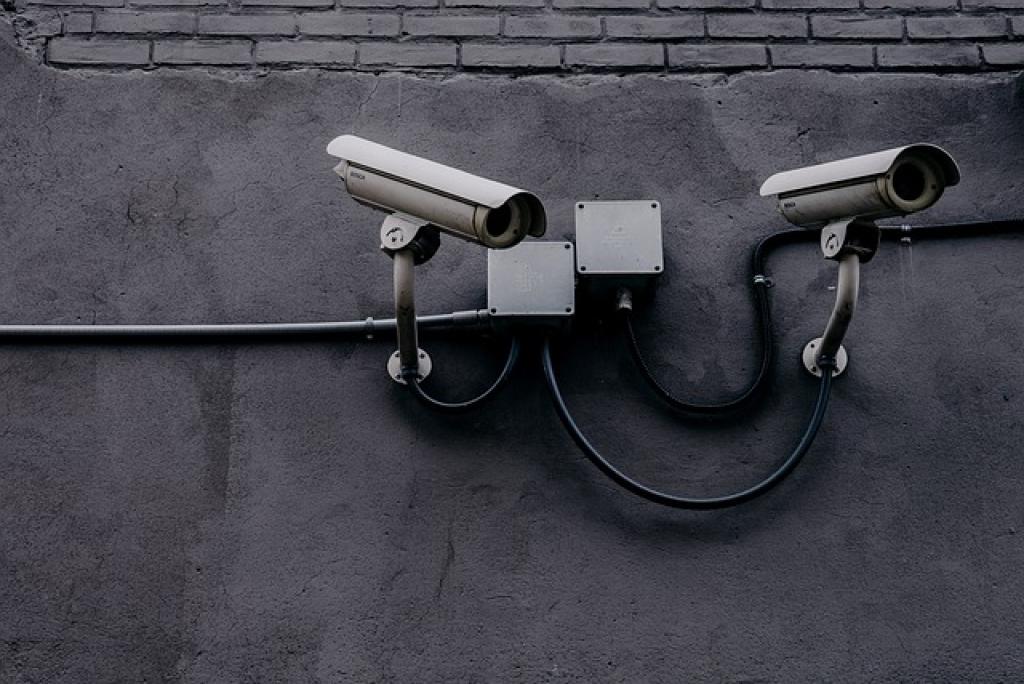
Enhancing Security Measures for Commercial Warehouses in Remote Areas
The tranquil isolation of remote areas can be deceptive, making commercial warehouses vulnerable to a host of security threats. From theft and vandalism to unauthorized access and natural disasters, these facilities face a unique set of challenges due to their distance from urban centers.
Securing these warehouses effectively requires innovative strategies that go beyond the traditional surveillance and alarm systems. With technological advancements, owners and operators now have a robust array of tools at their disposal, including advanced drone monitoring, AI-powered surveillance systems, and real-time access control mechanisms.
But technology alone can’t do all the heavy lifting. A comprehensive security plan also needs to incorporate human elements like trained security staff and strong local partnerships. This dual approach helps ensure that every base is covered, allowing businesses to operate smoothly while safeguarding their assets.
In this post, we’ll explore the essential security strategies necessary to protect commercial warehouses located in these isolated spots. Whether you’re new to the scene or a seasoned warehouse manager, there’s a wealth of insights here to fortify your facilities against potential threats. So, let’s dive in and enhance the security measures for your remote warehouse operations!
Understanding the Security Challenges in Remote Warehouse Locations
Operating a commercial warehouse in a remote area comes with its own set of unique security challenges. Unlike urban locations, these warehouses are often far removed from immediate emergency services and support systems, increasing their vulnerability to both natural and man-made threats.
One of the main issues is the extended response time in case of an emergency. Whether it’s a break-in, fire, or other crisis, the geographic isolation can delay intervention, making it critical to have robust preventative measures in place.
Additionally, remote locations may suffer from limited law enforcement presence and scarce surveillance, making them attractive targets for crime. This lack of vigilance can embolden potential intruders, highlighting the need for advanced security systems that can operate effectively without a constant human presence.
Environmental Factors
Natural elements also play a significant role. Remote warehouses are often exposed to harsh weather conditions, which can disrupt security infrastructure, such as camera systems and fencing. It’s essential to implement environmental-resistant technologies and regular maintenance to ensure these systems remain operational.
Understanding these challenges is the first step in developing a comprehensive security strategy for remote warehouse locations. Addressing each issue with tailored solutions can make a significant difference in safeguarding valuable assets and ensuring business continuity.
Implementing Advanced Surveillance Systems for 24/7 Monitoring
Ensuring constant surveillance of your remote warehouse can effectively deter potential threats and facilitate rapid response when incidents occur. Advanced surveillance systems are crucial for providing this around-the-clock oversight.
Modern technology offers a variety of options, including AI-powered cameras that automatically detect and alert operators about suspicious activities. These systems can differentiate between human movement and other stimuli, significantly reducing false alarms and improving response efficiency.
Integrating Drone Technology
Drones are becoming increasingly popular for monitoring large areas. Equipped with high-definition cameras and GPS, they can perform routine checks and cover extensive terrains where static cameras might be insufficient. Their ability to provide real-time footage and thermal imaging makes them invaluable for warehouses in isolated regions.
Cloud-based platforms serve as the backbone for many of these systems, enabling managers to access live footage remotely and store data securely. With the ability to monitor multiple camera feeds from various locations, managers have the flexibility to oversee operations without being physically present.
When implementing these advanced systems, it’s vital to ensure they are integrated with existing security measures. By doing so, you create a cohesive, layered defense that significantly enhances the security footprint of your warehouse.
Utilizing Access Control Systems to Restrict Unauthorized Entry
In remote warehouse locations, preventing unauthorized access is a critical aspect of maintaining overall security. Implementing robust access control systems can significantly enhance your warehouse’s defense against intruders.
Access control systems offer a range of solutions, from keycard entries and biometric scanners to advanced smart locks. These systems not only restrict entry to authorized personnel but also provide detailed access logs, making it easier to track movements within the facility and identify potential security breaches.
Biometric Enhancements
Biometric systems, such as fingerprint and facial recognition scanners, add an extra layer of security by ensuring that access is granted only to verified individuals. These technologies are particularly effective in environments where high security is paramount, reducing the risk of credential sharing or theft.
Additionally, integrating these systems with your surveillance infrastructure provides a cohesive security approach, allowing managers to coordinate access data with video footage. This integration can enhance incident investigations and streamline security operations.
Regular audits and updates to access permissions are necessary to ensure the system’s effectiveness. Keeping the technology current and training staff on security protocols are crucial steps in maintaining a secure environment. With the right access control measures, your warehouse can remain secure against unauthorized entry, even in the most secluded areas.
Enhancing Perimeter Security with Motion Sensors and Alarms
Establishing a secure perimeter is fundamental to safeguarding remote warehouses against unauthorized entry and unexpected threats. Motion sensors and alarm systems are essential tools in creating a robust defense line around your property.
Modern motion sensors detect any movement within a designated area and trigger alarms or alert security personnel. They can be strategically placed around entry points and vulnerable perimeters, serving as an early warning system to potential breaches.
Smart Alarm Systems
Integrating smart alarm systems with your motion sensors amplifies security effectiveness. These alarms can notify onsite security teams and send instant alerts to warehouse managers or security services via mobile apps. This rapid communication allows for prompt actions, whether it involves dispatching security personnel or contacting local law enforcement.
These sensors work seamlessly with other security measures, like surveillance cameras, increasing coverage and reducing blind spots. By aligning sensor alerts with live footage, you gain a comprehensive view of any potential threat in real time.
Regularly maintaining and testing sensor and alarm systems ensures they’re ready to perform when needed. Regular updates and system checks can prevent malfunctions and false alarms, thereby maintaining the confidence and reliability of your perimeter security setups.
Training Staff on Security Protocols and Emergency Response
Implementing technology-driven security solutions is only half the battle when it comes to protecting remote warehouses. Equally important is ensuring that staff are well-equipped with knowledge and training on security protocols and emergency response.
Educating employees about the specific security measures in place and their role in maintaining these systems is crucial. Regular training sessions can empower staff to act promptly and correctly in various scenarios, from handling unauthorized entry attempts to dealing with natural disasters.
Moreover, conducting regular emergency drills helps staff recognize alarms, understand evacuation routes, and respond swiftly in crisis situations. These exercises not only prepare individuals for potential real-life emergencies but also foster a team environment, where employees feel confident and supported.
Communication is key in emergencies. Training sessions should emphasize clear communication channels and procedures, ensuring that every team member knows whom to contact and how to report incidents as they occur.
By investing in staff training and preparedness, a warehouse can transform from a vulnerable target into a well-defended and resilient operation. Regular reviews and updates to the training protocols ensure they remain relevant and effective, adapting to evolving security needs and threats.
Conclusion: Comprehensive Strategies for Ensuring Warehouse Security
Securing a commercial warehouse, particularly in remote locations, requires a multifaceted approach. By understanding the unique challenges presented by these isolated settings, businesses can tailor their security measures to fit specific needs and vulnerabilities.
Implementing advanced surveillance systems offers a constant watchful eye, essential for deterring threats and ensuring quick response times. Coupling these with integrated access control systems not only restricts unauthorized entry but also provides a thorough record of personnel movement, adding an extra layer of accountability.
Further enhancing perimeter security with motion sensors and alarms fortifies the boundaries of your operation, alerting you to any unusual activities before they escalate. Technology-driven solutions, when combined with traditional strategies, create a cohesive defense model that covers all possible angles of attack.
However, technology alone is not enough. Equipping staff with knowledge and practical training in security protocols and emergency response is vital. Well-prepared employees form the backbone of an effective security framework, capable of responding swiftly and efficiently to any situation.
In conclusion, maintaining the security of a remote warehouse demands a balanced blend of innovative technology and human readiness. By investing in both advanced systems and comprehensive staff training, warehouse operators can create a robust security environment that safeguards their assets and enhances operational continuity. Through this strategic approach, warehouses can thrive, even in the most secluded locations, with peace of mind knowing that their facilities are well-protected against potential threats.


